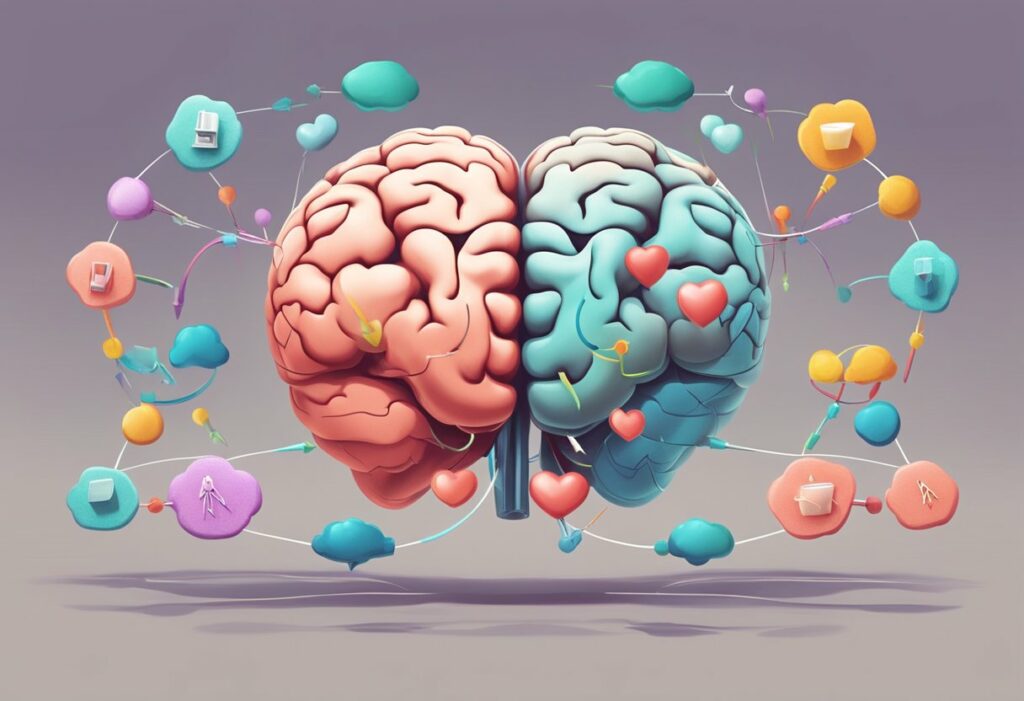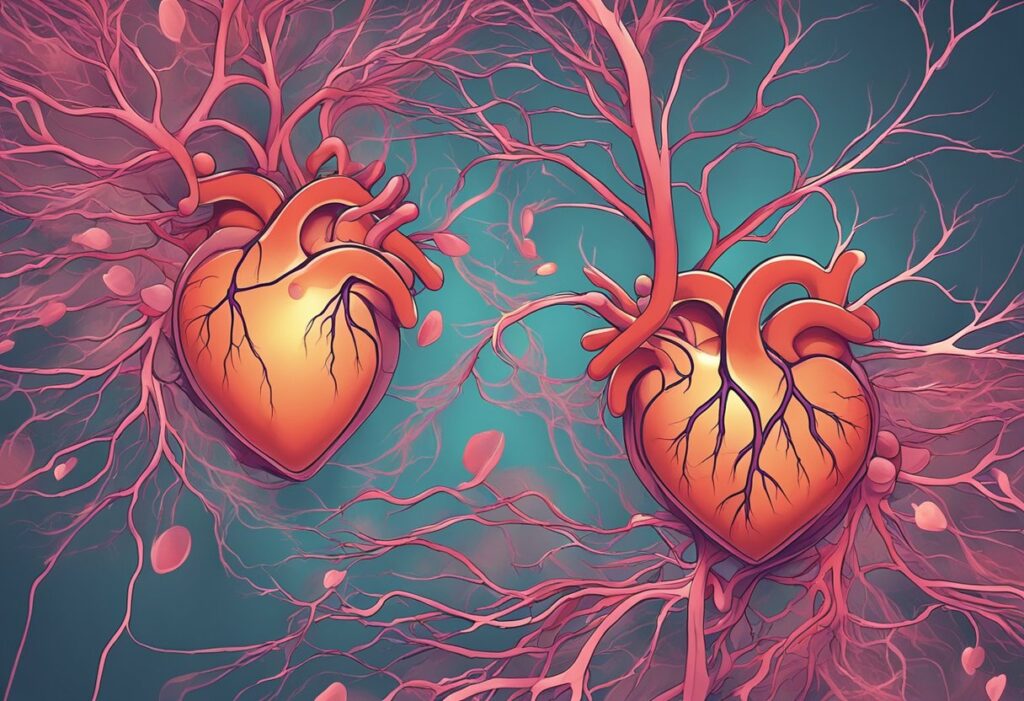The Science of Love: Unveiling the Hormonal Playbook of Romance

Love, a complex tapestry of emotions and behaviors, has intrigued scientists for centuries. The quest to understand the mechanisms behind romantic connections has unraveled a fascinating link to our biological systems. Hormones, the chemical messengers of our bodies, play a pivotal role in influencing how we experience and express love. They affect everything from initial attraction to long-term bonding, subtly guiding our romantic behaviors and feelings.
Research has identified several key hormones that are particularly influential in love-related phenomena. Oxytocin, often dubbed the ‘love hormone,’ is central to the development of strong emotional bonds and is most commonly associated with feelings of attachment and trust.
Dopamine, another vital hormone, is linked to pleasure and reward, driving the euphoric sensations often experienced during the early stages of love. Additionally, adrenaline and cortisol are responsible for the heart-racing excitement that can accompany a new romance, reflecting the body’s stress response in anticipation of social reward or rejection.
By examining the interplay of these hormones within the context of romantic experiences, we gain a clearer picture of the biological underpinnings of love. This scientific exploration helps to demystify love’s hold on humanity, providing insight into why certain behaviors emerge in the realm of romance and how our bodies contribute to forging deep emotional connections.
Chemical Foundations of Love

The interactions of various hormones orchestrate the complex behaviors associated with love. Their roles are specific and have been validated by scientific research.
Oxytocin and Bonding
Oxytocin, often dubbed the “love hormone,” plays a crucial role in forming social bonds and romantic attachments. It is released in high amounts during intimate activities, such as cuddling or holding hands, fostering a sense of closeness and trust between individuals.
- Release Triggers: Childbirth, lactation, physical closeness
- Effects:
- Increased trust and bonding
- Reduction of stress-related hormones
Dopamine and Pleasure
Dopamine acts as a reward chemical, triggering feelings of pleasure and happiness. In the context of love, its surge is linked to the gratification one feels when spending time with their partner or engaging in activities together.
- Associated Behaviors: Motivation to seek out rewarding experiences
- Pleasurable Activities Triggering Dopamine:
- Spending time with a loved one
- Receiving positive attention from a partner
Serotonin and Attachment
Serotonin levels influence mood and social behavior, making it a key component in the maintenance of romantic relationships. Consistent and high serotonin activity is correlated with feelings of security and contentment within attachments.
- Known Impacts:
- Stabilization of mood
- Promotion of feelings of well-being
The Psychology of Love

Understanding the psychology of love involves examining theories and cognitive processes that explain why and how people experience love in varied ways.
Attachment Theory in Relationships
Attachment theory posits that early relationships with caregivers shape an individual’s expectations for future romantic relationships. Secure attachment typically leads to healthy, trusting relationships, whereas insecure attachment—be it anxious or avoidant—may result in less satisfying connections.
- Secure Attachment: Characterized by comfort with intimacy and independence.
- Anxious Attachment: Marked by a concern with abandonment and an intense desire for closeness.
- Avoidant Attachment: Defined by a fear of dependence and a preference for emotional distance.
The Role of Expectation and Perception
Expectation and perception play significant roles in romantic relationships. They shape how individuals interpret and respond to partners’ actions.
- Expectation: These are the anticipated outcomes or behaviors in a relationship, often based on past experiences or societal norms.
- Perception: This refers to the interpretation of a partner’s behavior and the meaning assigned to actions.
Studies suggest that positive illusions can benefit relationships, where partners perceive each other in an overly positive light. However, unmet expectations can lead to dissatisfaction.
Physiological Responses to Love

When individuals fall in love, their bodies respond with a series of chemical and physical changes, ranging from adrenaline rushes to increased heart rate.
Stress Response and Romantic Love
The initial stages of romantic love activate the body’s stress response system. Adrenaline and norepinephrine levels rise, leading to:
- Increased heart rate
- Sweating
- Elevated blood pressure
This response is often likened to the feeling of butterflies in one’s stomach. The presence of stress hormones can enhance alertness and readiness to respond to potential challenges and opportunities inherent in a new romantic endeavor.
Physical Attraction and Arousal
Physical attraction and subsequent arousal are largely mediated by hormones such as testosterone and estrogen. These hormones contribute to:
- Desire: Heightened libido and the motivation to seek out romantic partners
- Arousal: Physical responses such as increased blood flow to sexual organs
Physical attraction is also influenced by the release of pheromones, which can play a role in subconscious communication between potential partners, signaling genetic compatibility and health.
Love Across the Lifespan

The study of love throughout different stages of life examines varying hormonal influences and romantic behaviors, specifically during adolescence and adult long-term relationships.
Romantic Behaviors in Adolescence
Adolescence is characterized by a surge in hormone levels, such as testosterone and estrogen, which can intensify romantic feelings and the desire for intimacy. During this period, individuals experience strong attractions and form their initial romantic connections. Dopamine and norepinephrine drive excitement and focus on potential partners, while oxytocin and vasopressin foster bonding.
- Testosterone and Estrogen: Increase attraction
- Dopamine: Heightens romantic interest
- Oxytocin: Encourages emotional bonding
- Vasopressin: Supports partner attachment
These biochemical reactions are potent, shaping the foundation of individuals’ romantic behaviors and preferences that often influence future relationships.
Long-Term Relationships in Adulthood
As individuals transition into adulthood, the focus often shifts toward finding long-lasting partnerships. Hormonally, the initial burst of passionate love, driven by dopamine and norepinephrine, gives way to deeper attachment, wherein oxytocin and vasopressin play a significant role in long-term bonding.
- Early Stages: Driven by novelty and excitement
- Long-Term Love: Supported by companionship and attachment
- Oxytocin and Vasopressin: Critical for sustaining connections
Studies suggest that the presence and function of these hormones contribute to the stability of adult relationships and can influence marital satisfaction and fidelity.

